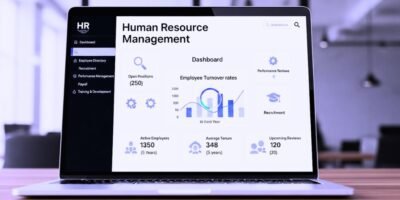Human Resource Development is a strategic approach that focuses on unleashing the potential of individuals within an organization through training, development, and education. It recognizes that employees are an organization’s most valuable asset and aims to enhance their skills, knowledge, and capabilities to drive organizational success. This article explores human resource development, its significance, key components, challenges, and impact on individuals and organizations.
Understanding Human Resource Development
Human resource development encompasses a range of activities and initiatives designed to enhance employees’ knowledge, skills, attitudes, and competencies. It systematically identifies development needs, provides training and learning opportunities, and creates a supportive environment that fosters continuous growth and improvement.
The development is not limited to formal training programs but extends to various methods such as coaching, mentoring, job rotations, on-the-job training, and career development initiatives. It recognizes that the development of employees is a long-term investment that yields both individual and organizational benefits.
Key Components of Human Resource Development
Training programs provide employees with specific knowledge and skills required to perform their jobs effectively. Development initiatives focus on broader competencies and personal growth to prepare individuals for future organizational roles and responsibilities.
Performance Management
Performance management systems facilitate regular feedback, goal setting, and performance evaluation. It helps align individual performance with organizational goals, identify areas for improvement, and recognize achievements.
Career Development
Career development programs assist employees in planning and managing their career paths within the organization. They include mentoring, coaching, succession planning, and growth opportunities to retain and motivate talented employees.
Learning Culture
Fostering a learning culture within the organization encourages continuous learning and knowledge sharing. It promotes an environment where employees are encouraged to seek new skills, share expertise, and contribute to the organization’s collective understanding.
Talent Management
Talent management involves identifying high-potential employees, providing them with challenging assignments and development opportunities, and ensuring organizational retention and growth. It focuses on nurturing and leveraging talent to achieve strategic objectives.
Significance of Human Resource Development
Human resource development plays a crucial role in organizations for the following reasons:
Enhanced Performance and Productivity
Human resource development initiatives equip employees with the necessary skills, knowledge, and capabilities to perform their jobs effectively. Well-trained and developed employees are more productive, motivated, and capable of delivering high-quality results.
Employee Engagement and Retention
Investing in employee development demonstrates a commitment to growth and career advancement. This, in turn, enhances employee engagement, job satisfaction, and organizational loyalty. Engaged employees are more likely to contribute to organizational success and remain with the company long-term.
Adaptability to Change
In today’s rapidly evolving business landscape, organizations must be agile and adaptable. Human resource development equips employees with the skills and mindset to embrace change, learn new technologies and processes, and navigate organizational transitions effectively.
Succession Planning and Talent Pipeline
The development helps identify and nurture future leaders within the organization. It identifies high-potential employees, prepares them for leadership roles, and ensures a smooth transition of key positions through effective succession planning.
Organizational Culture and Reputation
A strong human resource development focus fosters a culture of continuous learning, development, and innovation within the organization. It contributes to a positive corporate culture, attracts top talent, and enhances its reputation as an employer of choice.
Challenges in Human Resource Development
Implementing effective human resource development initiatives may face several challenges:
Resource Constraints
Human resource development initiatives require financial resources, time, and infrastructure. Limited budgets or competing priorities pose challenges in allocating adequate resources for training, development programs, and creating a supportive learning environment.
Changing Learning Needs
Employee learning needs are constantly evolving due to technological advancements, changing market trends, and industry dynamics. Organizations must stay updated and design flexible human resource development programs to address these needs effectively.
Evaluation and Measurement
Assessing the impact and effectiveness of human resource development initiatives can be challenging. Measuring the return on investment (ROI) and determining the effects of training and development programs on individual and organizational performance requires robust evaluation mechanisms.
Resistance to Change
Some employees may resist or be reluctant to engage in human resource development initiatives. Overcoming resistance to change and fostering a positive attitude toward learning and development requires effective communication, leadership support, and a culture that values continuous improvement.
The Impact of Human Resource Development
Human resource development has a significant impact on both individuals and organizations:
Individual Growth and Development
Human resource development initiatives empower individuals to enhance their skills, knowledge, and competencies. They enable career advancement, increase job satisfaction, and foster personal growth, leading to higher employee engagement and motivation.
Organizational Performance
Well-developed employees contribute to improved organizational performance. Enhanced skills and competencies translate into increased productivity, better decision-making, and the ability to adapt to changing market conditions, giving organizations a competitive edge.
Employee Retention and Talent Attraction
Organizations prioritizing human resource development initiatives are more likely to attract top talent and retain skilled employees. Providing opportunities for growth and advancement demonstrates a commitment to employee well-being and fosters a positive employer brand and reputation.
Innovation and Adaptability
The development creates a learning culture that encourages innovation, creativity, and adaptability. Employees who continuously learn and develop are more open to new ideas, embrace change, and contribute to organizational innovation.
Succession Planning and Leadership Development
Human resource development programs identify and develop future leaders, ensuring a talent pipeline for key positions. Effective succession planning reduces disruptions during leadership transitions and maintains continuity in organizational performance.
Conclusion
Human resource development is a strategic approach that recognizes the importance of investing in the growth and development of employees. By providing training and development opportunities and creating a supportive learning environment, organizations unlock the potential of their workforce, leading to improved individual and organizational performance. Its initiatives enhance employee engagement, attract and retain talent, foster a culture of continuous learning, and contribute to organizational success. Despite resource constraints and changing learning needs, organizations prioritizing are better equipped to adapt to change, drive innovation, and build a competitive advantage in today’s dynamic business environment.













